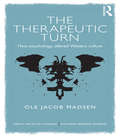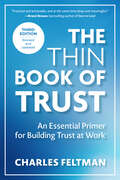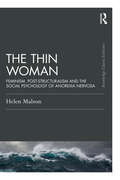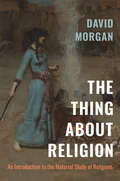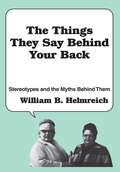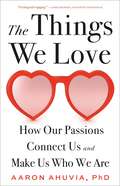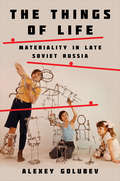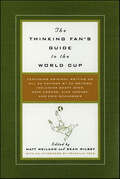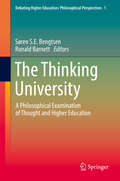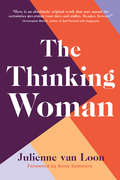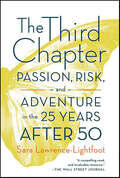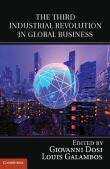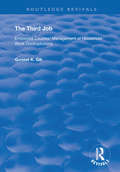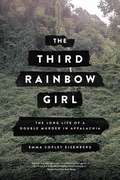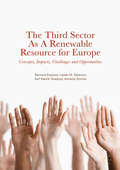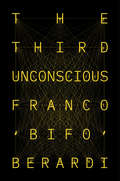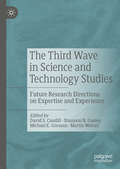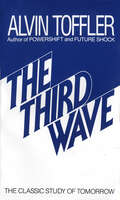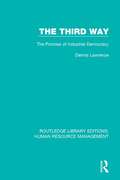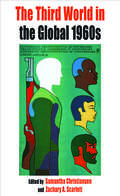- Table View
- List View
The Therapeutic Cloning Debate: Global Science and Journalism in the Public Sphere
by Eric A. JensenExploring the controversy surrounding therapeutic human cloning, this book draws upon data collected from news articles and interviews with journalists to examine the role of mass media in shaping biomedical controversies. With specific reference to the US and the UK as two leading scientific nations grappling with the global issue of therapeutic cloning, together with attention to the important role played by nations in Southeast Asia, this book sheds light on media representations of scientific developments, the unrealistic hype that can surround them, the influence of religion and the potentially harmful imposition of journalistic and nationalist values on the scientific field. Empirically grounded and theoretically innovative, The Therapeutic Cloning Debate will appeal to social scientists across a range of disciplines with interests in science communication, public engagement, cultural and media studies, science politics, science journalism, the sociology of expert knowledge and risk. It will also appeal to scientists, journalists, policymakers and others interested in how news media frame science for the public.
The Therapeutic Turn: How psychology altered Western culture (Concepts for Critical Psychology)
by Ole Jacob MadsenIn what ways has psychology become more influential in Western society? In this book author Ole Jacob Madsen considers the notion of a ‘Therapeutic Turn’ in Western culture – the tendency for psychology to permeate ever new spheres within society. The Therapeutic Turn evaluates the increasing prevalence of psychology in several areas of Western society: Western consumer culture, contemporary Christianity, self-help, sport and politics. Madsen proposes that there are problematic aspects to this development which are seldom recognised due to a widely held assumption that ‘the more psychology, the better for everyone’. A recurring concern with psychological solutions is that they often provide individual solutions to structural problems. As a result, psychologists may be inadvertently increasing the burden on the shoulders of the people they are meant to help and, at the same time, our capacity to understand individual suffering in the light of major historical and political changes in society is becoming increasingly clouded. The Therapeutic Turn presents an accessible and engaging critique of the influence of psychology within Western society. It will appeal to a broad audience of students, academics and lay readers interested in this aspect of modernity and contemporary society, and it will also be of great interest to practitioners and therapists.
The There Is No Box: A Practical Guide for the Relatable Leader
by Simon Cleveland Marisa ClevelandLeading isn&’t just something you do; leadership is a lifestyle. In today&’s global economy, effective leadership requires engaging in diverse interactions, meaning there is no one, predefined way to lead. Instead, leaders today must be culturally agile, and they must live that awareness and adaptability each and every day. There Is No Box is a practical guide for leaders who recognize how critical it is to draw outside the lines of typical guidance in order to rethink leadership development and gain competencies that make them more inclusive, culturally aware, and empowered to facilitate collaboration. Authors Marisa Cleveland and Simon Cleveland draw on their combined forty years of experience in corporate, government, and higher education leadership to answer a question they&’ve been getting for over two decades: how do lauded leaders live? Through anecdotes and interviews paired with actionable takeaways, the book investigates where leaders start, how they become boxed in upon entering the workforce, and finally how they can break through those boundaries to become a culturally agile leader and a meaningful contributor to our global society. There Is No Box provides established and emerging leaders across all fields with the tools to make leadership their lifestyle.
The Thin Book of Trust, Third Edition: An Essential Primer for Building Trust at Work (The\thin Book Ser. #2)
by Charles Feltman“I have used his definitions of trust and distrust in every book I’ve written, because they are practical and actionable and, at the same time, deep and meaningful. It was important to me to dig into these definitions and explore how they play out at work, in relationships, and in our everyday lives.” —Brené Brown, bestselling author of Dare to LeadBest-selling author Charles Feltman updates his business classic, The Thin Book of Trust, with new resources and tools to build trust in the post-pandemic world.Feltman's phenomenal bestseller with almost 100,000 copies sold across two editions outlines in a very simple and quick way the art of building trust between people in organizations as a core essential workplace competency.The updated Thin Book of Trust offers a framework that supports trust building as a workplace competency. It is based on the idea that building trust is a competency, a set of skills that can be learned, improved, and practiced. It will help you continuously improve your ability to build and maintain trust with others. It can also help you create and contribute to a high-trust culture at work.The third edition includes a new study guide and a new resource download page.Charles Feltman says: "Whether you lead others, contribute individually, or serve as a coach, consultant, facilitator, HR or OD professional, your ability to generate and sustain strong trust is critical to the success and well-being of your enterprise. It is my hope this new edition serves you well in becoming an exceptional trust-builder."
The Thin Woman: Feminism, Post-structuralism and the Social Psychology of Anorexia Nervosa (Psychology Press & Routledge Classic Editions)
by Helen MalsonThe First Edition of The Thin Woman, first published in 1998, provides an in-depth discussion of anorexia nervosa from a critical feminist social psychological standpoint. In the original text, the author argues that the notion of 'anorexia' as a medical condition limits our understanding of anorexia and the extent to which we can explore it as a socially and discursively produced problem. The book now has a new introduction that discusses some of the major cultural and academic developments that have occurred since its first publication. In considering our changing cultural landscapes, the introduction goes on to discuss the so-called ‘obesity crisis’; the emergence of post-feminism; the massive global expansion of digital and social media and, most recently, the Covid-19 pandemic. Turning to academic developments, it focuses on the increasing recognition of intersectional feminism and reflects on how intersectional perspectives are now beginning to shape critical feminist research and theory in this field. The new introduction also highlights the significant growth in the last 25 years of critical feminist research on eating disorders, which has brought with it a greater awareness of intersectional theory and a more inclusive agenda; an expansion of research foci; a diversification of methodologies and the emergence of more egalitarian models of research in which those with lived experience of eating disorders are becoming valued research team members who help to shape research aims, designs and processes. Based on original research using historical and contemporary literature on anorexia nervosa and a series of interviews with women who identified as ‘anorexic’, this book offers critical insights into this problem. It is an invaluable read for anyone interested in eating disorders and gender, developments in feminist post-structuralist theory and discourse analytic research in psychology.
The Thing about Religion: An Introduction to the Material Study of Religions
by David MorganCommon views of religion typically focus on the beliefs and meanings derived from revealed scriptures, ideas, and doctrines. David Morgan has led the way in radically broadening that framework to encompass the understanding that religions are fundamentally embodied, material forms of practice. This concise primer shows readers how to study what has come to be termed material religion—the ways religious meaning is enacted in the material world.Material religion includes the things people wear, eat, sing, touch, look at, create, and avoid. It also encompasses the places where religion and the social realities of everyday life, including gender, class, and race, intersect in physical ways. This interdisciplinary approach brings religious studies into conversation with art history, anthropology, and other fields. In the book, Morgan lays out a range of theories, terms, and concepts and shows how they work together to center materiality in the study of religion. Integrating carefully curated visual evidence, Morgan then applies these ideas and methods to case studies across a variety of religious traditions, modeling step-by-step analysis and emphasizing the importance of historical context. The Thing about Religion will be an essential tool for experts and students alike. Two free, downloadable course syllabi created by the author are available online.
The Things They Say behind Your Back: Stereotypes and the Myths Behind Them
by William HelmreichIn this groundbreaking book in the dim world of opinion formation Helmreich opens a closet bursting with skeletons and explores the myths and historical roots of stereotypes pertaining to several ethnic groups: Are Jews really smarter? What about rhythmical Blacks, hard-drinking Irishmen, dumb Poles, emotional Hispanics, and all those cold, artificial WASPs sipping inevitable dry martinis? He discusses which stereotypes are false, which are true, how they originated, and why some of the most libeled groups promote warped perceptions about themselves.Helmreich has examined over four hundred scientific studies and combines hard facts with humor, anecdotes, and common sense in his courageous attempt to understand and explain stereotypes. He contends that we should discuss this topic openly and recognize the tendencies and traits, negative and positive,-that are rooted in a group's history and culture rather than pretend that there are no differences among the members of multiracial America.
The Things We Love: How Our Passions Connect Us and Make Us Who We Are
by Aaron AhuviaAn "exciting and engaging" investigation (Jonah Berger) of the secret, tangled emotional relationships people have with things—drawing on cutting-edge findings from the fields of psychology, neuroscience, and marketing. Books, baseball cards, ceramic figurines, art, iPhones, clothing, cars, music, dolls, furniture, and even nature itself. If you're like most people, at some point in your life you've found yourself indulging in a love affair with some thing that brings you immense joy, comfort, or fulfillment. Why is it that we so often feel intense passion for objects? What does this tendency tell us about ourselves and our society? In The Things We Love, Dr. Aaron Ahuvia presents astonishing discoveries that prove we are far less &“rational&” than we think when it comes to our possessions and hobbies. In fact, we have passionate relationships with the things we love, and these relationships are driven by influences deep within our culture and our biology. Some of our passions are sudden, obsessive, and fleeting; others are devoted and lifelong affairs. Some turn dark: we become hoarders, or would prefer to destroy certain objects rather than let anyone else own them. And as technology improves, becoming increasingly addictive, one wonders: might our lives become so dominated by our emotional ties to things that we lose interest in other people? Packed with fascinating case studies, scientific analysis, and takeaways for living in a modern and ever-so-material world, The Things We Love offers a truly original and insightful look into our love for inanimate objects — and how better understanding these relationships can enrich and improve our lives.
The Things of Life: Materiality in Late Soviet Russia
by Alexey GolubevThe Things of Life is a social and cultural history of material objects and spaces during the late socialist era. It traces the biographies of Soviet things, examining how the material world of the late Soviet period influenced Soviet people's gender roles, habitual choices, social trajectories, and imaginary aspirations. Instead of seeing political structures and discursive frameworks as the only mechanisms for shaping Soviet citizens, Alexey Golubev explores how Soviet people used objects and spaces to substantiate their individual and collective selves. In doing so, Golubev rediscovers what helped Soviet citizens make sense of their selves and the world around them, ranging from space rockets and model aircraft to heritage buildings, and from home gyms to the hallways and basements of post-Stalinist housing. Through these various materialist fascinations, The Things of Life considers the ways in which many Soviet people subverted the efforts of the Communist regime to transform them into a rationally organized, disciplined, and easily controllable community. Golubev argues that late Soviet materiality had an immense impact on the organization of the Soviet historical and spatial imagination. His approach also makes clear the ways in which the Soviet self was an integral part of the global experience of modernity rather than simply an outcome of Communist propaganda. Through its focus on materiality and personhood, The Things of Life expands our understanding of what made Soviet people and society "Soviet."
The Thinking Fan's Guide to the World Cup
by Franklin FoerThe Thinking Fan's Guide to the World Cup features original pieces by thirty-two leading writers and journalists about the thirty-two nations that have qualified for the world's greatest sporting event. In addition to all the essential information any fan needs—the complete 2006 match schedule, results from past tournaments, facts and figures about the nations, players, teams, and referees—here are essays that shine a whole new light on soccer and the world.Former Foreign Minister of Mexico Jorge G. Castañeda invites George W. Bush to watch a game.Novelist Robert Coover remembers soccer in Spain after the death of General Francisco Franco.Dave Eggers on America, and the gym teachers who kept it free from communism.Time magazine's Tokyo bureau chief Jim Frederick shows how soccer is displacing baseball in Japan.Novelist Aleksandar Hemon proves, once and for all, that sex and soccer do not mix.Novelist John Lanchester describes the indescribable: the beauty of Brazilian soccer.The New Yorker's Cressida Leyshon on Trinidad and Tobago, 750-1 underdogs.Fever Pitch author Nick Hornby on the conflicting call of club and country.Plus an afterword by Franklin Foer on the form of government most likely to win the World Cup.
The Thinking University: The Selected Works Of Ronald Barnett
by Ronald Barnett Søren S.E. BengtsenThis book reinvigorates the philosophical treatment of the nature, purpose, and meaning of thought in today’s universities. The wider discussion about higher education has moved from a philosophical discourse to a discourse on social welfare and service, economics, and political agendas. This book reconnects philosophy with the central academic concepts of thought, reason, and critique and their associated academic practices of thinking and reasoning. Thought in this context should not be considered as a merely mental or cognitive construction, still less a cloistered college, but a fully developed individual and social engagement of critical reflection and discussion with the current pressing disciplinary, political, and philosophical issues. The editors hold that the element of thought, and the ability to think in a deep and groundbreaking way is, still, the essence of the university. But what does it mean to think in the university today? And in what ways is thought related not only to the epistemological and ontological issues of philosophical debate, but also to the social and political dimensions of our globalised age? In many countries, the state is imposing limitations on universities, dismissing or threatening academics who speak out critically. With this volume, the editors ask questions such as: What is the value of thought? What is the university’s proper relationship to thought?To give the notion of thought a thorough philosophical treatment, the book is divided into in three parts. The focus moves from an epistemological perspective in Part I, to a focus on existence and values in higher education in Part II, and then to a societal-oriented focus on the university in Part III. All three parts, in their own ways, debate the notion of thought in higher education and the university as a thinking form of being.
The Thinking Woman
by Julienne van LoonOne of the age-old questions of philosophy is what does it mean to live a good life? Such concerns are important to us all, yet the voices and thoughts of women have often been missing from the conversation. In this extraordinary book, award-winning writer, Julienne van Loon addresses the work of leading international thinkers, interrogating and enlivening their ideas on everyday issues. She discusses friendship with pre-eminent philosopher Rosi Braidotti, wonder with cultural historian Maria Warner, play with celebrated novelist Siris Hustvedt, love with cultural critic Laura Kipnis, work with socialist feminist Nancy Holmstrom, and fear in relation to the work of Helen Caldicott, Rosie Batty and Julia Kristeva. Her journey is intellectual and deeply personal, political and intimate at once. It introduces readers to some extraordinary women whose own deeply thoughtful work has much to offer all of us. They may transform our own views of what it means to live a good life.
The Third Apple: Personal Computers and the Cultural Revolution
by Jean-Louis GasséeThe title refers not to Eve's or Newton's apple, but the computer.
The Third Chapter: Passion, Risk, and Adventure in the 25 Years After 50
by Sara Lawrence-LightfootIn the twenty-first century, a developmental phase of life is emerging as significant and distinct, capturing our interest, engaging our curiosity, and expanding our understanding of human potential and development. Demographers talk about this new chapter in life as characterized by people—between fifty and seventy-five—who are considered "neither young nor old." In our "third chapters" we are beginning to redefine our views about the casualties and opportunities of aging; we are challenging cultural definitions of strength, maturity, power, and sexiness. This is a chapter in life when the traditional norms, rules, and rituals of our careers seem less encompassing and restrictive; when many women and men seem to be embracing new challenges and searching for greater meaning in life. In The Third Chapter, the renowned sociologist Dr. Sara Lawrence-Lightfoot offers a strong counterpoint to the murky ambivalence that shrouds our clear view of people in their third chapters. She challenges the still prevailing and anachronistic images of aging by documenting and revealing the ways in which the years between fifty and seventy-five may, in fact, be the most transformative and generative time in our lives, tracing the ways in which wisdom, experience, and new learning inspire individual growth and cultural transformation. The women and men whose voices fill the pages of The Third Chapter tell passionate and poignant stories of risk and vulnerability, failure and resilience, challenge and mastery, experimentation and improvisation, and insight and new learning.
The Third Chimpanzee: The Evolution and Future of the Human Animal
by Jared DiamondPhysiologist Diamond traces humankind's biological and social development from about 40,000 years ago, to the present, and into the future. For general readers. (c) by Book News, Inc., Portland, OR.
The Third Digital Divide: A Weberian Approach to Digital Inequalities (Routledge Advances in Sociology)
by Massimo RagneddaDrawing on the thought of Max Weber, in particular his theory of stratification, this book engages with the question of whether the digital divide simply extends traditional forms of inequality, or whether it also includes new forms of social exclusion, or perhaps manifests counter-trends that alleviate traditional inequalities whilst constituting new modalities of inequality. With attention to the manner in which social stratification in the digital age is reproduced and transformed online, the author develops an account of stratification as it exists in the digital sphere, advancing the position that, just as in the social sphere, inequalities in the online world go beyond the economic elements of inequality. As such, study of the digital divide should focus not simply on class dynamics or economic matters, but cultural aspects - such as status or prestige - and political aspects - such as group affiliations. Demonstrating the enduring relevance of Weber’s distinctions with regard to social inequality, The Third Digital Divide: A Weberian approach to rethinking digital inequalities explores the ways in which online activities and digital skills vary according to crucial sociological dimensions, explaining these in concrete terms in relation to the dynamics of social class, social status and power. As such, it will be of interest to social scientists with interests in sociological theory, the sociology of science and technology, and inequality and the digital divide.
The Third Industrial Revolution in Global Business
by Louis Galambos Giovanni DosiThe essays in this volume probe the impact the digital revolution has had, or sometimes failed to have, on global business. Has digital technology, the authors ask, led to structural changes and greater efficiency and innovation? While most of the essays support the idea that the information age has increased productivity in global business, the evidence of a "revolution" in the ways industries are organized is somewhat more blurred, with both significant discontinuities and features which persist from the "second" industrial revolution.
The Third Job: Employed Couples' Management of Household Work Contradictions (Routledge Revivals)
by Gurjeet K. GillPublished in 1998. This text focuses on "three-job" (two paid and one unpaid housework job) families. It investigates the way in which partners experience and handle the contradictions in the daily running of the household - contradictions which result from the conflicting features within and between society and the family. An equal division of household labour remains at the heart of these contradictions as women take on the responsibility of running the family home in addition to paid employment.
The Third Rainbow Girl: The Long Life of a Double Murder in Appalachia
by Emma Copley EisenbergA stunningly written investigation of the murder of two young women--showing how a violent crime casts a shadow over an entire community. <P><P>In the early evening of June 25, 1980 in Pocahontas County, West Virginia, two middle-class outsiders named Vicki Durian, 26, and Nancy Santomero, 19, were murdered in an isolated clearing. They were hitchhiking to a festival known as the Rainbow Gathering but never arrived. For thirteen years, no one was prosecuted for the "Rainbow Murders," though deep suspicion was cast on a succession of local residents in the community, depicted as poor, dangerous, and backward. <P><P>In 1993, a local farmer was convicted, only to be released when a known serial killer and diagnosed schizophrenic named Joseph Paul Franklin claimed responsibility. With the passage of time, as the truth seemed to slip away, the investigation itself caused its own traumas-turning neighbor against neighbor and confirming a fear of the violence outsiders have done to this region for centuries. <P><P>Emma Copley Eisenberg spent years living in Pocahontas and re-investigating these brutal acts. Using the past and the present, she shows how this mysterious act of violence has loomed over all those affected for generations, shaping their fears, fates, and the stories they tell about themselves. In The Third Rainbow Girl, Eisenberg follows the threads of this crime through the complex history of Appalachia, forming a searing and wide-ranging portrait of America-its divisions of gender and class, and of its violence.
The Third Sector As A Renewable Resource for Europe: Concepts, Impacts, Challenges And Opportunities
by Lester M. Salamon Annette Zimmer Karl Henrik Sivesind Bernard EnjolrasThis book provides a critical account of the third sector and its future in Europe. It offers an original conceptualization of the third sector in its European manifestations alongside an overview of its major contours, including its structure, sources of support, and recent trends. It also assesses the impact of this sector in Europe which considers its contributions to European economic development, citizen well-being and human development. The Third Sector As A Renewable Resource for Europe presents the findings of the Third Sector Impact (TSI) project funded by the European Union’s Seventh Framework Program (FP7). It recognises that in a time of social and economic distress, as well as enormous pressures on governmental budgets, the third sector and volunteering represent a unique ‘renewable resource’ for social and economic problem-solving and civic engagement in Europe.
The Third Unconscious
by Franco Bifo BerardiA wide-ranging exploration of the present, and the future, of the UnconciousThe Unconscious knows no time, it has no before-and-after, it does not have a history of its own. Yet, it does not always remain the same. Different political and economic conditions transform the way in which the Unconscious emerges within the "psychosphere" of society. In the early 20th century, Freud characterized the Unconscious as the dark side of the well-order framework of Progress and Reason. At the end of the past century, Deleuze and Guattari described it as a laboratory: the magmatic force ceaselessly bringing to the fore new possibilities of imagination. Today, at a time of viral pandemics and in the midst of the catastrophic collapse of capitalism, the Unconscious has begun to emerge in yet another form. In this book, Franco 'Bifo' Berardi vividly portraits the form in which the Unconscious will make itself manifest for decades to come, and the challenges that it will pose to our possibilities of political action, poetic imagination, and therapy.
The Third Wave in Science and Technology Studies: Future Research Directions on Expertise and Experience
by Michael E. Gorman David S. Caudill Shannon N. Conley Martin WeinelThis book analyzes future directions in the study of expertise and experience with the aim of engendering more critical discourse on the general discipline of science and technology studies. In 2002, Collins and Evans published an article entitled “The Third Wave of Science Studies,” suggesting that the future of science and technology studies would be to engage in “Studies in Expertise and Experience.” In their view, scientific expertise in legal and policy settings should reflect a consensus of formally-trained scientists and citizens with experience in the relevant field (but not “ordinary” citizens). The Third Wave has garnered attention in journals and in international workshops, where scholars delivered papers explicating the theoretical foundations and practical applications of the Third Wave. This book arose out of those workshops, and is the next step in the popularization of the Third Wave. The chapters address the novel concept of interactional experts, the use of imitation games, appropriating scientific expertise in law and policy settings, and recent theoretical developments in the Third Wave.
The Third Wave: The Classic Study of Tomorrow
by Alvin TofflerFrom the author of Future Shock, a striking way out of today&’s despair . . . a bracing, optimistic look at our new potentials.The Third Wave makes startling sense of the violent changes now battering our world. Its sweeping synthesis casts fresh light on our new forms of marriage and family, on today's dramatic changes in business and economics. It explains the role of cults, the new definitions of work, play, love, and success. It points toward new forms of twenty-first-century democracy.Praise for The Third Wave &“Magnificent . . . an astonishing array of information.&”—The Washington Post &“Imperishably fresh.&”—Business Week &“Will mesmerize readers, and rightly so.&”—Vogue &“Alvin Toffler . . . has written another blockbuster . . . a powerful book.&”—The Guardian &“Fresh ideas, clearly explained. . . . Toffler has proven again that he is a master.&”—United Press International &“Toffler has imagination and an ability to think of various future possibilities by transcending prevailing values, assumptions and myths.&”—Associated Press &“Once you have walked into his version of the future, you may decide never again to whitewash some of the built-in frailties of the real present.&”—Financial Post &“Rich, stimulating and basically optimistic . . . will unquestionably aid many to a greater understanding of [today&’s] puzzling social changes.&”—The Globe & Mail &“A detailed breathtakingly bold projection of the social changes required if we are to survive. . . . Toffler&’s vision of a democratic, self-sustaining utopia is a brave alternative to recent grim warnings.&”—Cosmopolitan
The Third Way: The Promise of Industrial Democracy (Routledge Library Editions: Human Resource Management)
by Dennis LawrenceIn this book, first published in 1988, the author shows that the movement for industrial democracy has deep roots in British history, and looks at the economic and political potential of industrial democracy as a mechanism to halt 100 years of industrial decline. The author advocates the general adoption of the industrial co-operative form of organisation on two grounds: it provides for authentic industrial democracy, and it maximises commitment to industrial regeneration. Lucid and jargon-free, The Third Way explores the options for economic and institutional change in a mature industrial economy. This title will be of interest to students of business studies.
The Third World in the Global 1960s
by Zachary Scarlett Samantha ChristiansenDecades after the massive student protest movements that consumed much of the world, the 1960s remain a significant subject of scholarly inquiry. While important work has been done regarding radical activism in the United States and Western Europe, events in what is today known as the Global South-Asia, Africa, and Latin America-have yet to receive the attention they deserve. This volume inserts the Third World into the study of the 1960s by examining the local and international articulations of youth protest in various geographical, social, and cultural arenas. Rejecting the notion that the Third World existed on the periphery, it situates the events of the 1960s in a more inclusive context, building a richer, more nuanced understanding of the era that better reflects the dynamism of the period.

